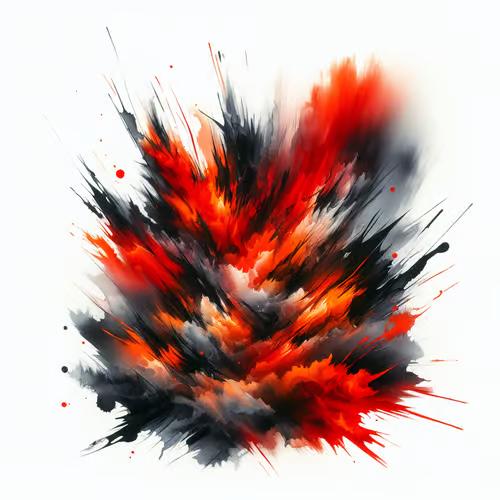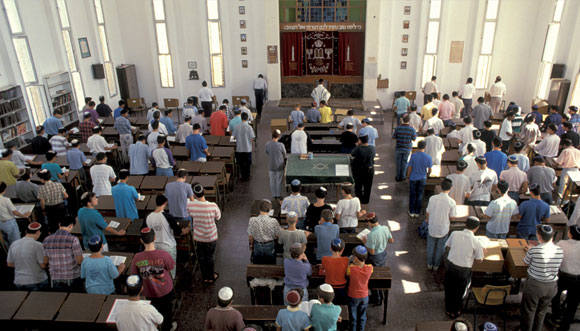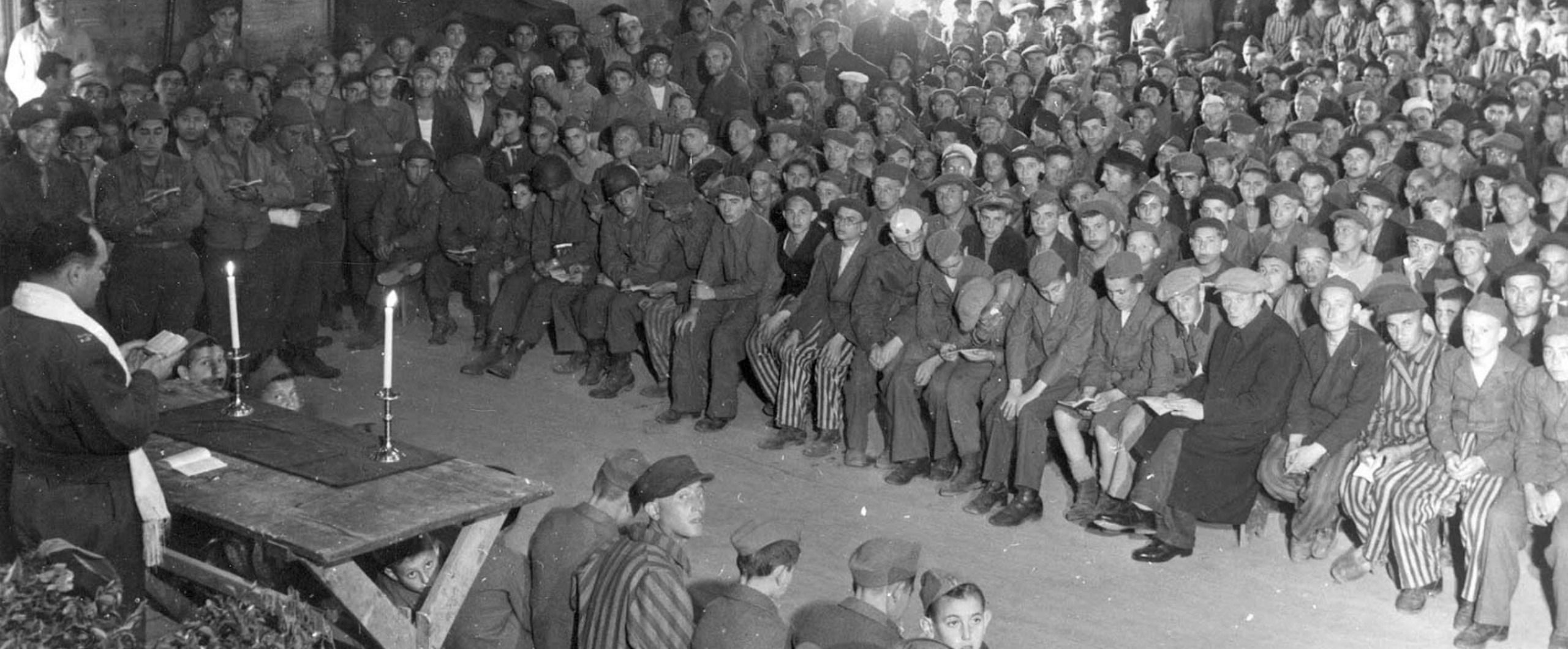May 19, 2022|י"ח אייר ה' אלפים תשפ"ב Emor 5782 - Taking The Mikdash With Us Wherever We Go
Print ArticleRav Meir Shapira zt”l, the founder of Daf Yomi was also the founder of Yeshivas Chachmei Lublin, which existed in the 1930s and became one of the largest yeshivas in the world. On the front of the yeshiva there was a pasuk, which recently has been restored to the original building:
תהלים פרק לד:יב - לְכוּ בָנִים שִׁמְעוּ לִי יִרְאַת יְקֹוָק אֲלַמֶּדְכֶם:
Go children, listen to me, the fear of Hashem I will teach you.
Someone once asked him why he chose this pasuk? It seems strange. A pasuk about going, leaving, so I can teach you? It should be a pasuk about coming in so you can learn in the yeshiva!?
Explained Rav Meir Shapira: The real sign of success in our yeshiva will not be how our students succeed inside the yeshiva. That’s much easier. The success will be found when they leave and take the values of the beis medrash with them into the world.
As Parshas Emor commences, it introduces us to a number of halachos specific to Kohanim, and it then proceeds to discuss halachos that relate to the Kohein Gadol only. And one them, at first glance, seems quite shocking:
(יב) וּמִן הַמִּקְדָּשׁ לֹא יֵצֵא וְלֹא יְחַלֵּל אֵת מִקְדַּשׁ אֱלֹקָיו כִּי נֵזֶר שֶׁמֶן מִשְׁחַת אֱלֹקָיו עָלָיו אֲנִי יְקֹוָק:
The Kohein Gadol may NOT LEAVE THE Beis HaMikdash!?
However, it is clear from the commentaries that this verse is not as simple as it sounds.
The Rambam in Hilchos Klei HaMikdash, Perek 5, describes how the Kohein Gadol spent his day. He was expected to spend pretty much his entire day in the Beis HaMikdash. Often, he was involved in the different elements of the Avodah, but when he was not, he would spend much of his time in his office on the grounds of the Beis HaMikdash known as, “The Lishkas Kohein Gadol”. However, the Rambam points out as well that the Kohein Gadol, like many employees, could leave for an hour or two during the day and that he went home to his house in Yerushalayim, each night.
What, then, is the Torah teaching when it describes the Kohein Gadol as “Min HaMikdash Lo Yeitzei”? That he can’t leave the Mikdash?!
Rashi, quoting chazal in the gemara in Sanhedrin and Zevachim points out that this halacha has to be understood in context. Up to this point, the Torah was discussing the halachos related to a Kohein who loses a relative, the Kohein as an aveil.
In that context, the Torah tells us that when it comes to the Kohein Gadol he is unique in that: Min HaMikdash Lo Yetzei, he doesn’t leave the Beis HaMikdash. And chazal explain that this DOES NOT mean that the Kohein Gadol is forbidden from leaving the BHMK, and not even when he loses a relative.
However, there are two unique halachos that apply to him:
1) He doesn’t follow behind the casket of the one who has passed away. He is not YOTZEI, he doesn’t GO OUT behind the aron.
2) Whereas a regular Kohein may not perform the Avoda when he is an onein, between the time of the loss and the burial, the Kohein Gadol is allowed to continue to serve in the Beis HaMikdash even when he is an onein.
Both of these halachos relate to the idea that the Kohein Gadol is expected to continue to maintain a latent awareness of his role as the guardian of the mikdash at all times, even at a time when it would seem quite difficult to do so.
However, I want to share with you an approach that is found in the writings of many of the Chassidic Masters which relates not only to the Kohein Gadol, but to all of us.
The Baal Shem Tov writes that the location of a Jew is typically defined by our geography. However, that is not always the case. In fact, there are numerous examples in halacha where one’s location is not dependent on our physical location but on where we are in our minds.
1) For example, there is a concept in Hilchos Shabbos known as Techumin, that a person is not allowed to travel more than 2000 amos (about ¾ of a mile) past the outskirts of the town in which you are found when Shabbos begins.
However, there is one way to extend that techum, that boundary, for oneself. If you place food for a meal somewhere else within your boundary before Shabbos, it will count as if you are actually present at that spot when Shabbos began.
What about the fact that you weren’t present in that location? It’s ok because you have in effect, “placed yourself” in that location.
2) Similarly, when it comes to the laws of brachos, there is a concept known as Shinui Makom, if you make a bracha in your house and then move locations, there is a question as to whether you need to make a bracha again. However, if you have in mind when you make the bracha that you intend to change locations, that new location is considered like your original location and there is no need for an additional bracha.
These are two examples of how our physical location does not determine our makom, but rather, our machshava, our thoughts.
As Rav Tzadok HaKohein MiLublin writes:
במקום שהוא המחשבה של אדם שם הוא כל האדם, כי עיקר האדם אינו הגוף רק הנפש
The place where one’s mind is where one is in total. Because the essence of a person isn’t one’s body, but one’s soul.
Based on this idea, says the Baal Shem Tov, this is another layer to concept when it comes to the Kohein Gadol of “Min HaMikdash Lo Yetzei”, that the Kohein Gadol can never LEAVE the Mikdash.
The Torah isn’t telling the Kohein Gadol that he can’t PHYSICALLY exit the building. Rather, that no matter where life would take him, even when he would head out to take care of an errand or tend to some other need, he had to maintain a constant, latent awareness of where he was anchored, the Beis Mikdash.
Rav Soloveitchik explained this idea as well with regard to the laws of birchas haTorah. If I am eating in my sukkah in the morning, I make a bracha of “lesheiv basukkah”. If I then leave the sukkah and come back later that day for the next meal, again I make that same bracha. However, when it comes to Talmud Torah, the mitzvah of learning, that is not the case. I make the birchas haTorah in the morning, learn a little bit, and then I may not have my next chavrusa until later that evening. Nevertheless, I am not required to make another bracha. Why not? Hours and hours have gone by! Explains Tosfos in Brachos (11b) that because one has a mitzvah to learn at all times, one is never misyaeish from learning, one never gives up from learning, so one doesn’t need to make a new bracha. And Rav Soloveitchik explained this to mean that since we are constantly navigating halachic questions no matter where we are - at home with our families, at the office, at a baseball game – we never “leave” learning. We always have that latent awareness. In a certain sense, even though we do not learn all day, we are never “yotzei” from the Beis Medrash. We never fully leave the Beis Medrash.
This week was the final week of classes at YU, so we gathered the students together to offer a message as we send them off for the summer. And Rabbi Marc Penner offered such a beautiful idea. He noted that in the section of davening where we mention the korbanos we begin with the psukim that describe the kiyor, the special wash-basin which the Kohanim use to wash their hands before they begin the Avoda in the Beis HaMikdash.
But it’s a funny section to include. The kiyor is not one of the korbanos. It is how the Kohanim prepared themselves for their daily avoda?! And Rabbi Penner explained that is exactly the idea. We wake up in the morning, and chazal in their brilliance tell us to recite the pesukim about the kiyor, to remind ourselves that NO MATTER WHERE WE ARE, we are there for a reason. Hashem has put us in this place, and it is our job to perform our Avoda, our job.
This is the lesson of Min HaMikdash Lo Yetzei. We may not physically be standing in the Beis HaMikdash, but wherever we are we should recognize that we are there to fulfill our mission. Because, in the end, min hamikdash lo yeitzei, we never really leave the mikdash, because we have the ability to take it with us wherever we go.




